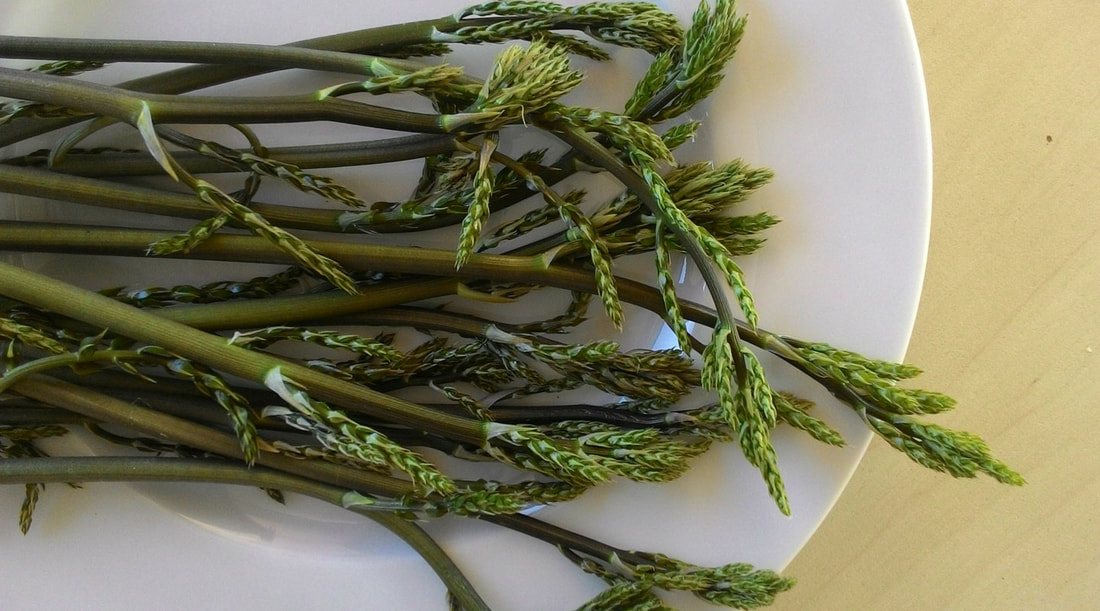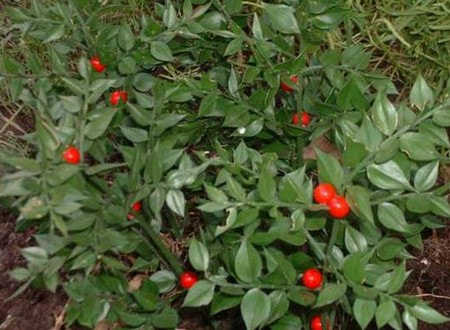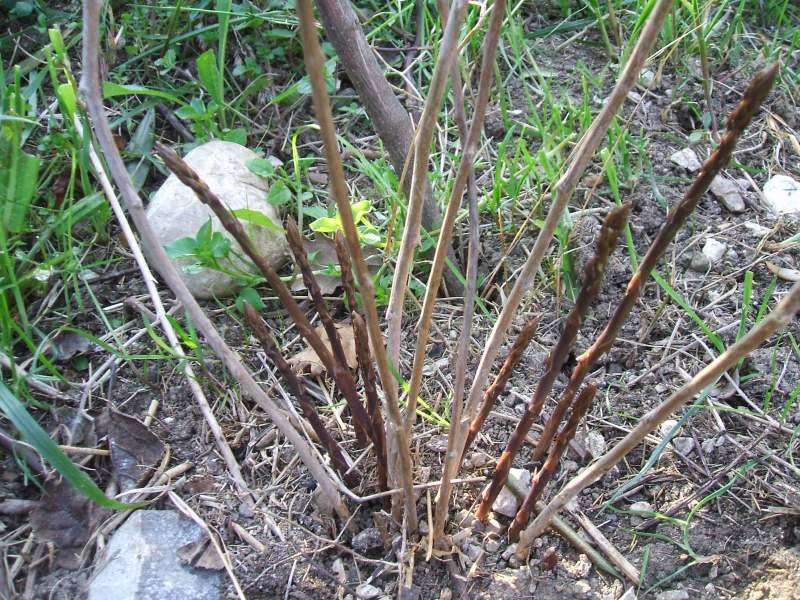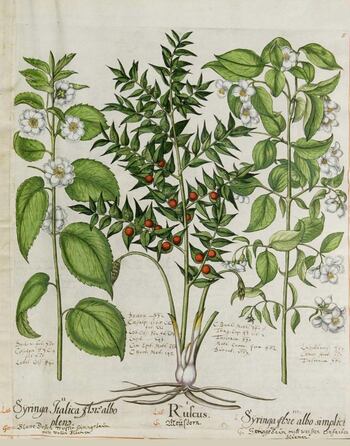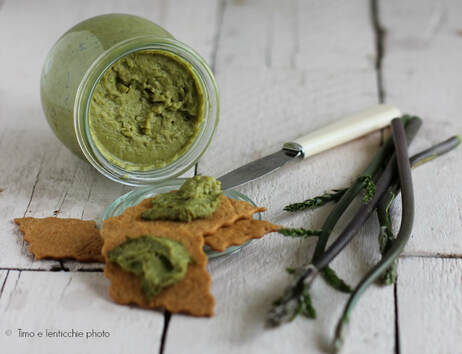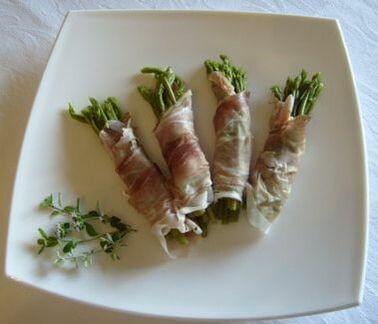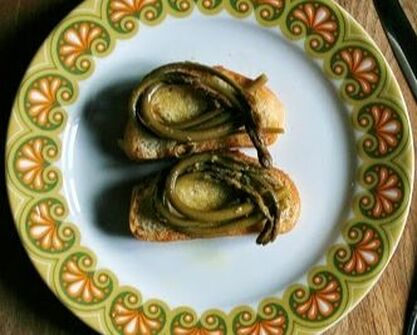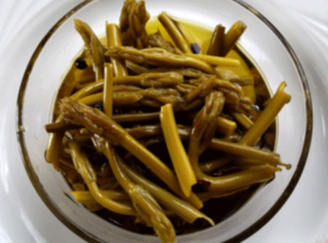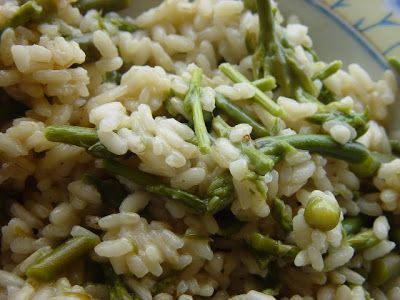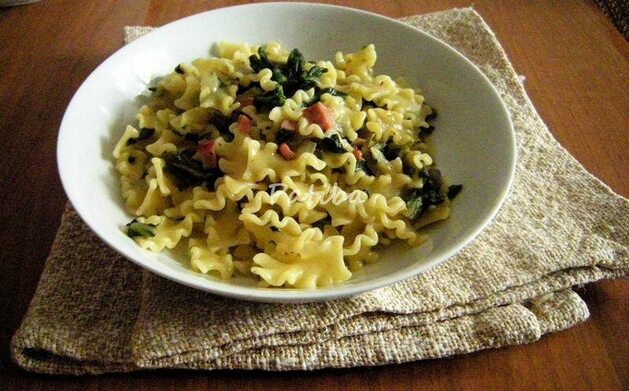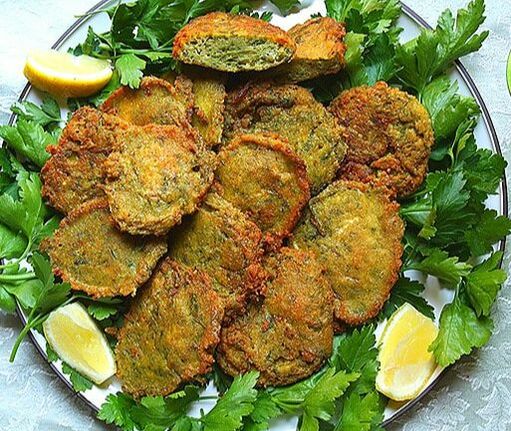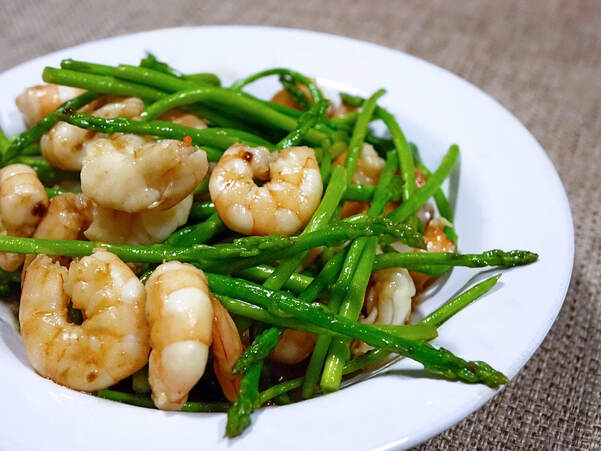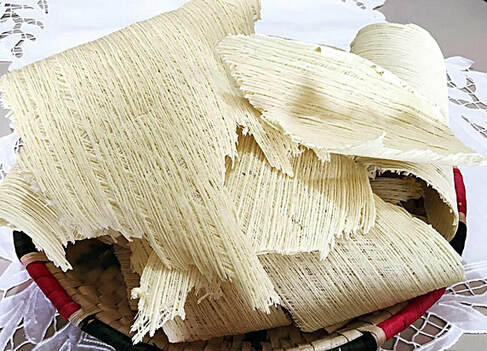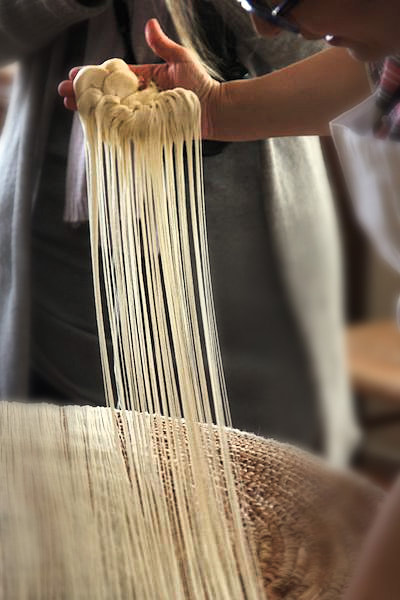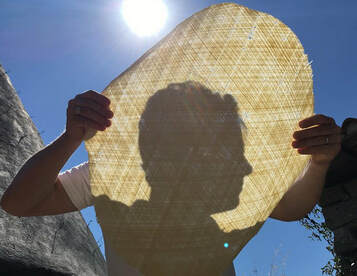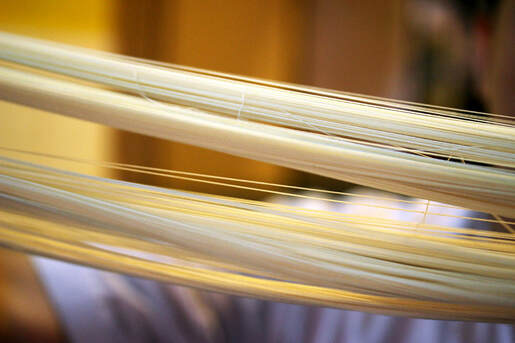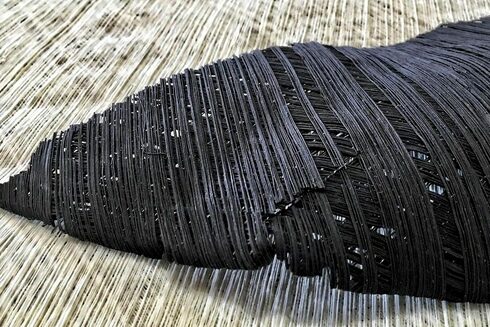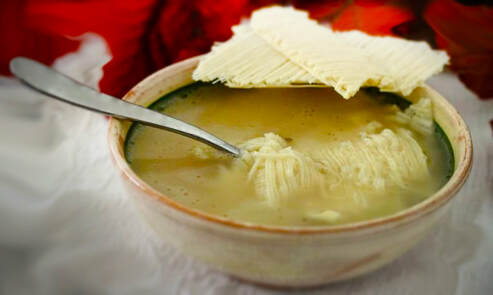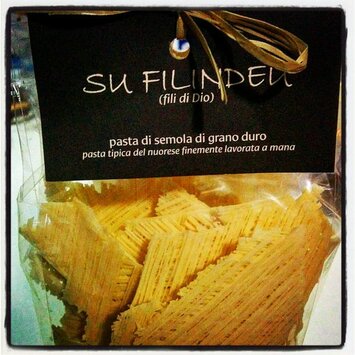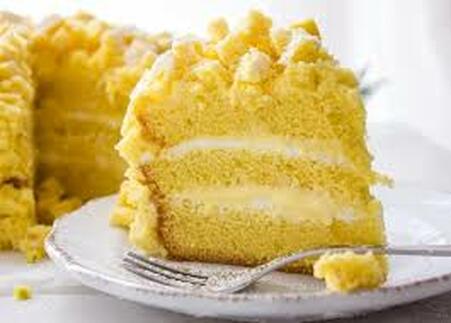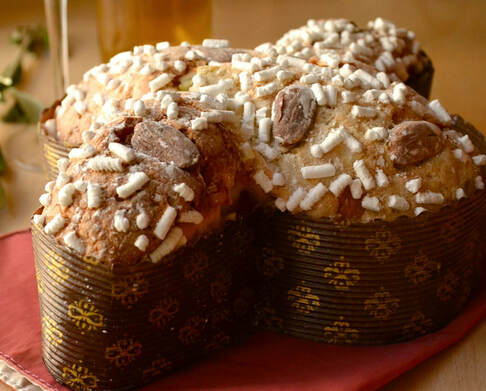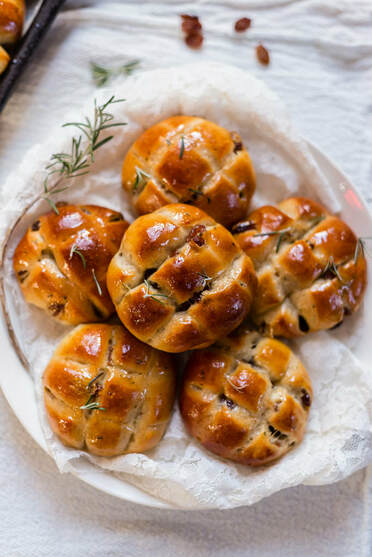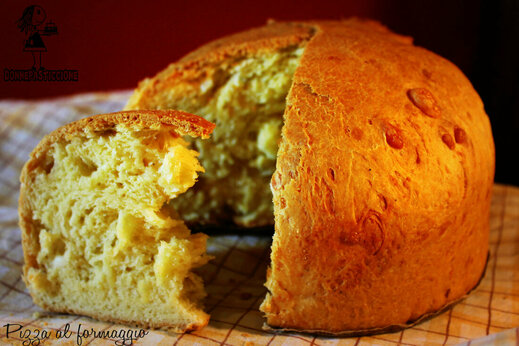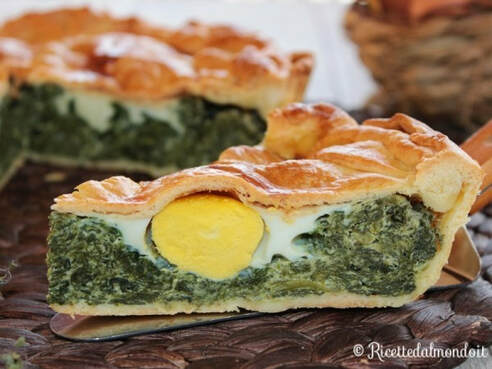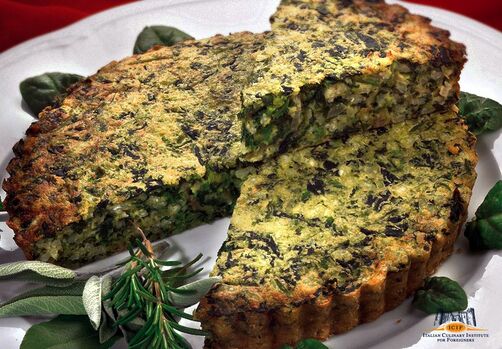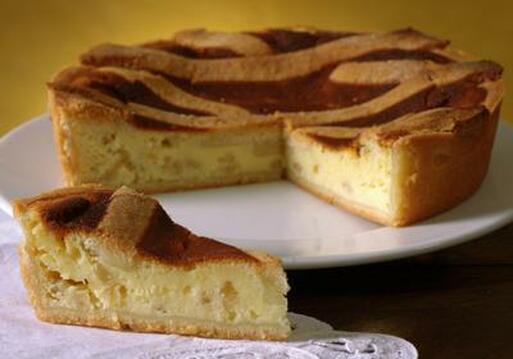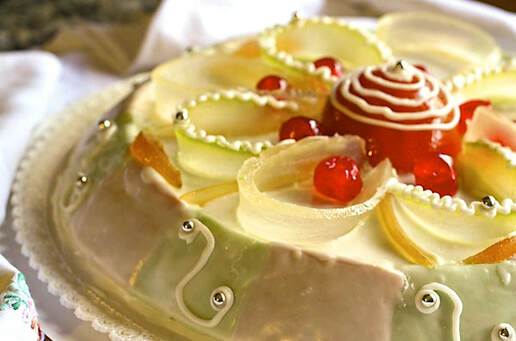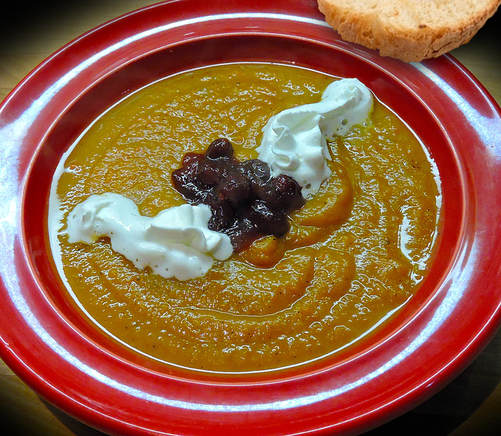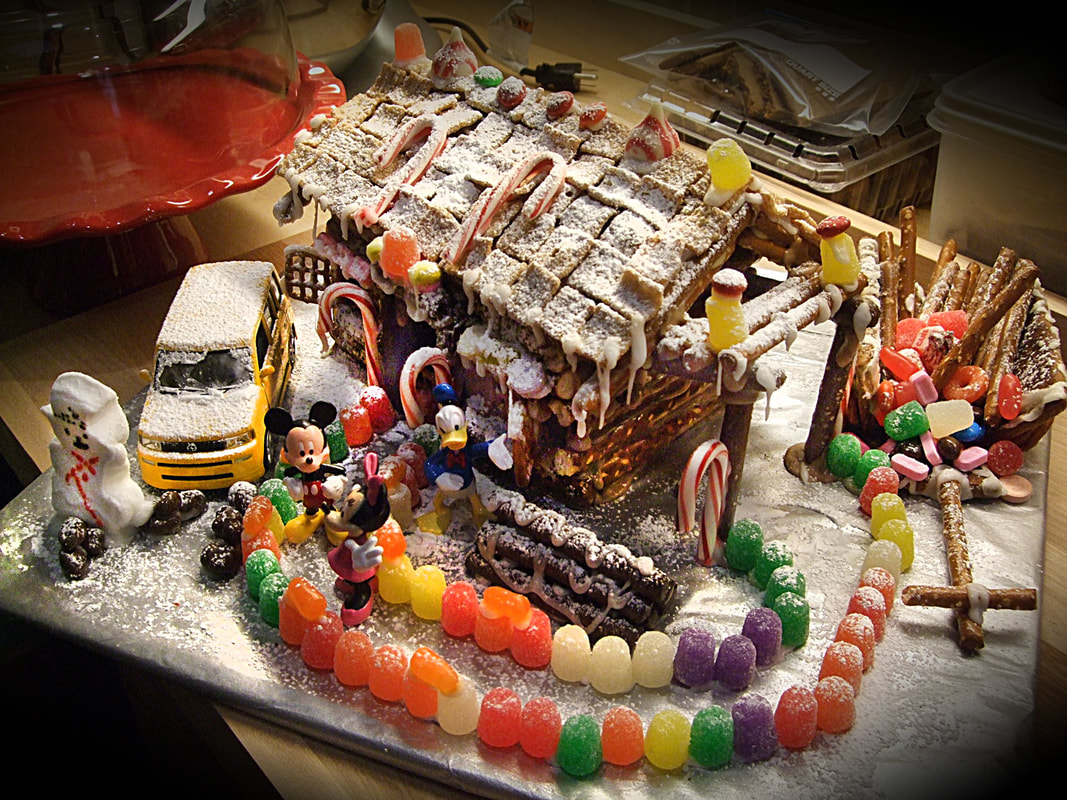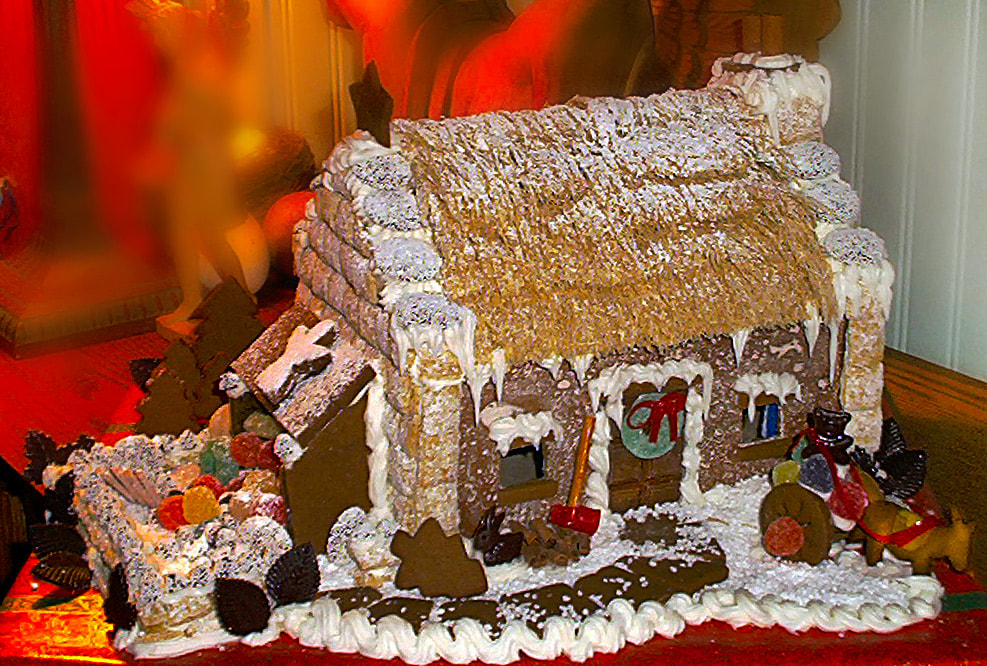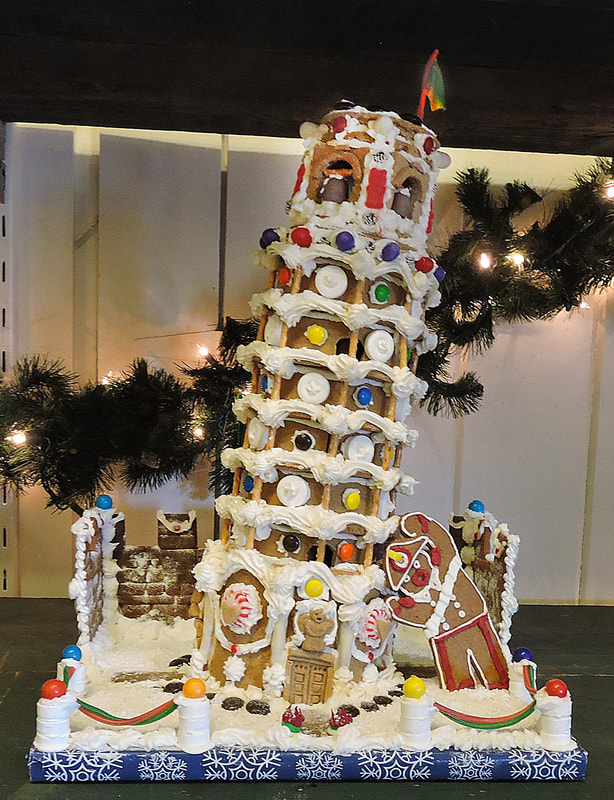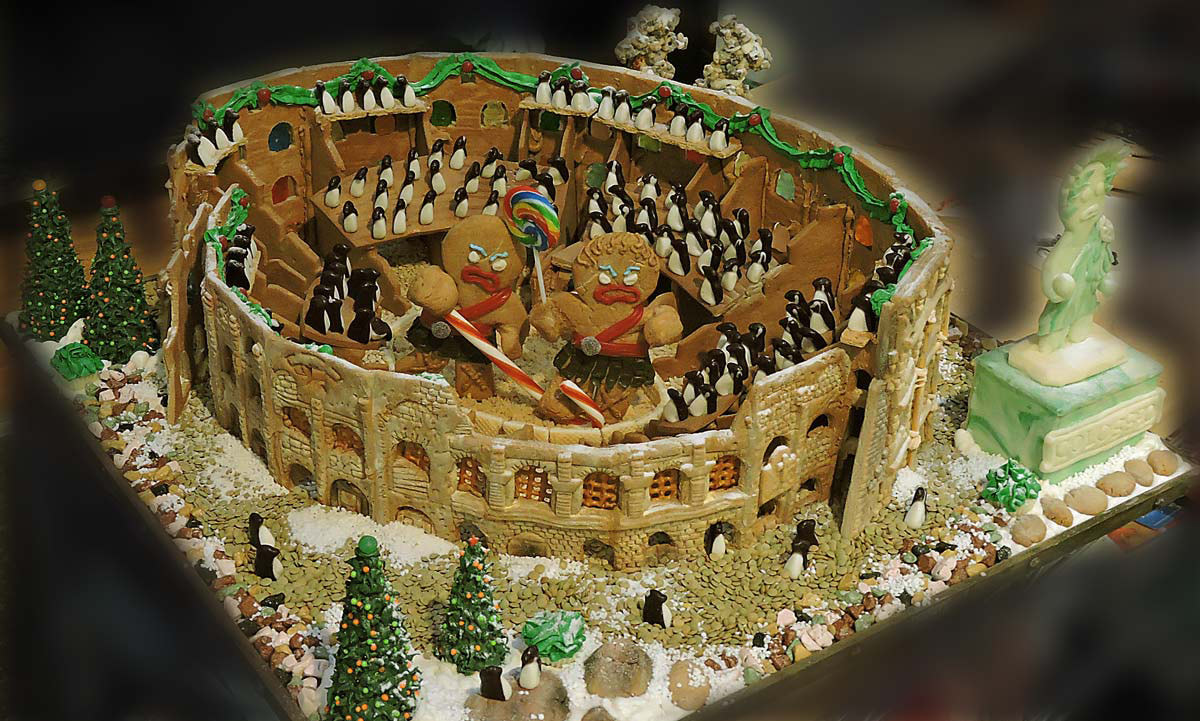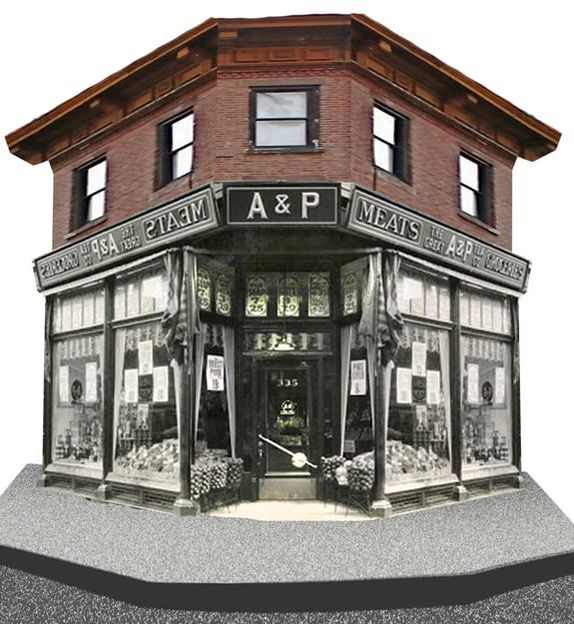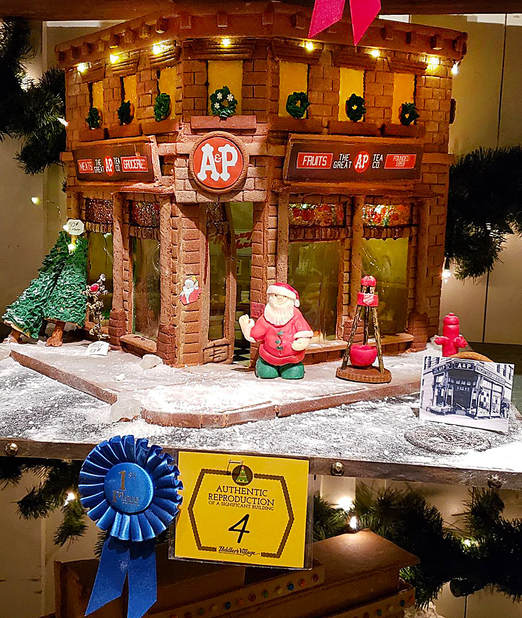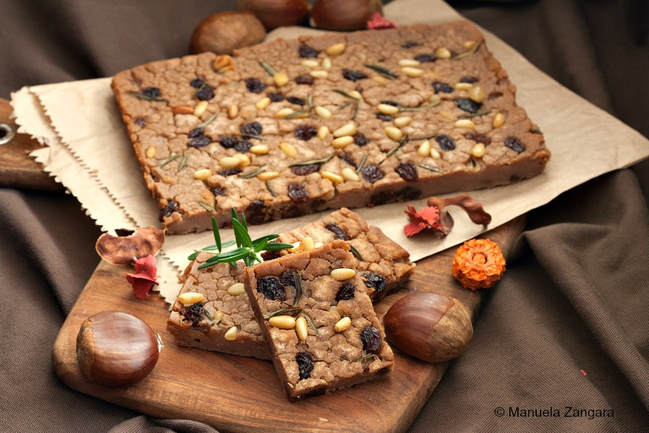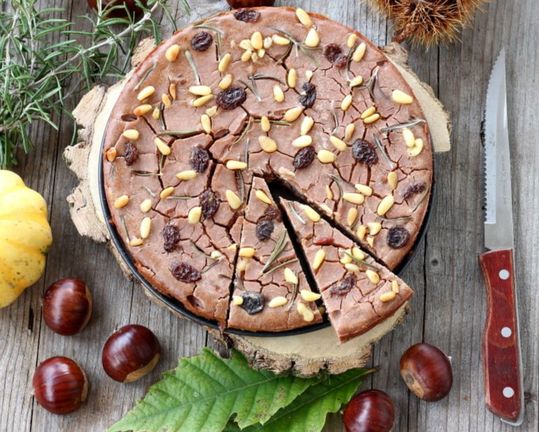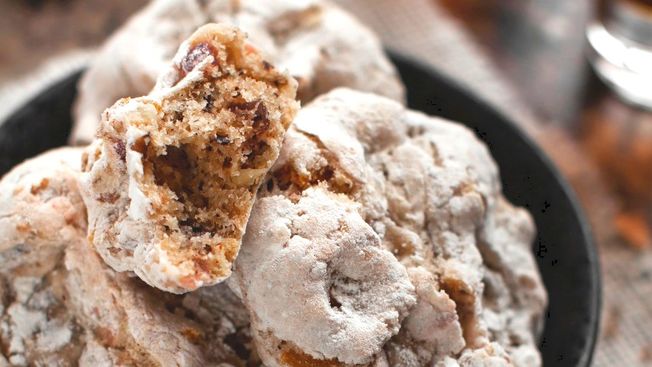|
Pungitopo (also known as Butcher's Broom) might be a popular plant for use in natural healing remedies, but it is often found while hiking in the mountains of Italy for use in local, traditional Italian recipes. Pungitopo tends to grow wild as an evergreen bush (looking like a short, bushy holly) with asparagus-like sprouts in fall. It is gathered in bunches about 12" tall and used in la cucina in the same was as asparagus. Tied with string and steamed until tender, it's often eaten as a side dish or wrapped in prosciutto, The sprouts, called ruscli (rusculins in English) are the tenderest part. Pungitopo is actually a member of the lily family closely related to asparagus botanically speaking. It and was once used in Europe make small brooms to clean butchers' chopping blocks. It's scent had the ability deter rodents from taking an interest in meats hanging to cure. The plant is well known throughout Italy, Europe and to the British Isles. Other common names are jew’s myrtle, sweet broom, kneeholy, pettigree, knee holly, kneeholm. In Italy, they will also be known as asparagi selvatici (wild asparagus) or portafortuna natalizio (Christmas Luck), referring to the time of year it is usually enjoyed in the Italian kitchen. It is mostly harvested nowadays for its thick, brown rhizome, which is harvested in the fall when the plant stores most of its energy for winter. It's herbal use is to make healing teas. There use can be as simple as boiling or steaming and served with butter or olive oil, the was asparagus are served. The softer buds are used in fritatta, frittella (fritters), risotto or in pasta dishes. Their taste is bitter but the buds alone are a bit sweeter. Here are a few ideas...
--GVI In the small Sardinian town of Nuoro, there are a very few women (you might count them on one hand) who still know how to make what many say is the rarest type of pasta in Sardinia Italy and perhaps the whole world... Su filindeu (in Sardinian dialect), and in Italian, Fili di Dio, can be translated as either Wires, Yarns or Threads of God. You might think of this pasta as the elevated and rarer version of angel hair pasta. Filindeu is tied to a religious ritual celebrated in the region of Nuoro in the town of Lula. La Festa di San Francesco is held on May 1st at the Chiesa della Solitudine di Nuoro. Oddly, this celebration is tied to a murder in the year 800 AD. Accused of murder and being hunted down for his crime, a young man claimed innocence and took refuge in a cave about 15 miles from Nuoro. He was discovered, brought to trial and miraculously (to him) declared innocent. He had prayed to Saint Francis during his time of refuge in the cave and thus built a shrine in the cave in honor of his patron saint. In autumn on October 4th, there is a second procession to the cave and shrine followed by a celebratory feast of filindeu. The dough to make this special pasta is durum semolina, water and a bit of salt, without leavening. It is then kneaded for a very long time to stretch the gluten, making it very soft with amazing elasticity--the key to making the long strands. The dough is rolled by hand into 8 long, thin snakes, which are folded, halved and pulled, only to be folded and stretched again--32 times in total--resulting in 256 thread-like thin bundles of parallel groups of pasta. These threads are then stretched across a large, flat tray called a fundu, traditionally woven from leaves of the local asphodel plant (a member of the lily family), often used in basket-making. To aide in the stretching, the dough is occasionally dipped in salt water--the timing of this sensed only by the experience of the artisan making the pasta. This process is repeated until a single layer of "threads" cover the entire fundu. the basket is then rotated by about 60° with another layers of pasta "threads" laid down. This is repeated a third time creating three crisscrossed layers of "threads". The tray is placed in the sun to dry causing the three layers to stick together while creating a stiff fabric of pasta looking very much like a course textured cheesecloth. For the feast, the filindeu is broken into pieces and put in boiling mutton broth. Grated pecorino (sheep) cheese is added to complete the soup. I don't know about you, but I've always loved my soup loaded with noodles--perfect for when the cold weather hits. If you're ever in Sardinia, look for packages of filindeu shards. Some have realized that this is a real Sardinian treasure and are trying to expand the availability of this pasta. Sadly, this unique pasta technique is in danger of becoming extinct. For example, Only one of Paula Abraini’s two daughters knows basic technique but seem uninterested in continuing the tradition. Abraini also has no granddaughters to pass he skills along to. The two other women in Abraini’s family who still carry on the tradition are both in their 50s and also have no successors to this tradition. Paula Abriani was so concerned about the techniques of making su filindeu disappearing, that she went to the local government to see if there was some money to open a school. There wasn't. Then she tried to teach young locals to make it in her home--they got discouraged with its complexity and gave up. Luckily, she was invited to Rome by the gourmet magazine Gambero Rosso so they could film her techniques for posterity. She has also started making filindeu for several restaurants who serve her amazing pasta to clients from around the world. The preservation of her tradition is looking a bit brighter! If you're traveling to Nuoro, search out the women who still make this pasta for a lesson on how it's done. They have learned the skill from their mothers who learned it from their mothers and so on, going back three hundred years. Ask, plead or beg for a lesson from either Paola Abraini, Salvatora Pisano or Grazia Selis. If you're lucky enough to get a little lesson from them, don't forget to say "thank you" in Sarda, the Sardinian dialect... grazie meda! And give them a solemn promise that you will pass along their skills. --Jerry Finzi You might also be interested in...
How to Cook Pasta: 101 Map of Regional Pasta Everything You Ever Wanted to Know about Pasta Sexy Pasta Shapes! The LIGHT Way to Make Potato Gnocchi Canederli: The Italian Matzo Ball Does Adding Water to a Pasta Sauce Make a Difference? Making Fresh Pasta: A Family Tradition Test Driving the Kitchenaid Pasta Extruder Spaghetti the Grows on Trees? Celebrate International Women's Day like they do in Italy, or as they call it, Festa delle Donne... with a cake, namely Torta di Mimosa. Easter is called Pasqua in Italy, and is a time for celebration and breaking the Lenten fast. In Italy, spring comes early, the weather is wonderful and the scent of flowers blossoming are everywhere. Pasqua is a time for feasting with la famiglia. The Monday after Easter Sunday is a national holiday called Pasquetta (Little Easter), when most businesses close and workers spend the day at home with their family. There are many types of celebration sweet pane (breads) and savory torte (cakes or tarts) in Italy, many of which made from family recipes handed down from generation to generation--often hundreds of years old. Some are known all over Italy while others are regional or local traditional recipes. One has to keep in mind, however, that even within each region there are variations in these recipes--often changing from town to town or family to family. Just keep in mind, it's all about the feast. Here are some of the more popular treats with links to their traditional Italian recipes. If you need translations you can always cut and paste the text of each recipe into Google Translate (or better yet, install a translation plug-in into your browser to do it automatically). Enjoy... and Buona Pasqua! 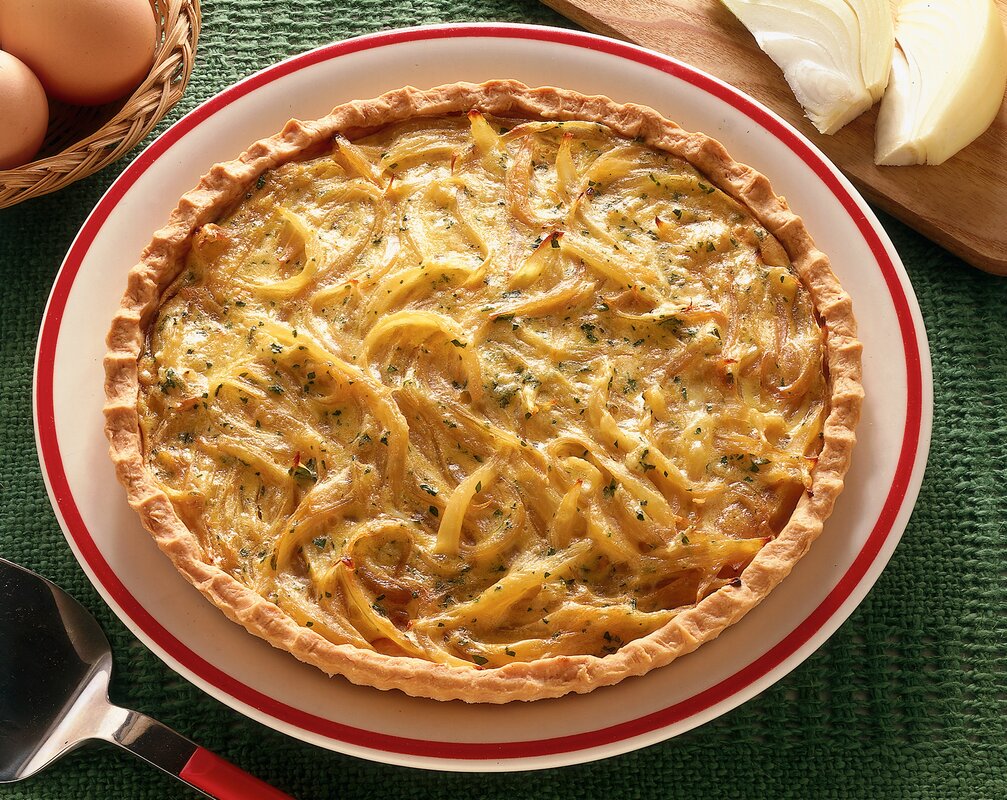
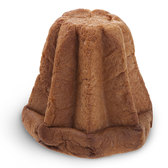 An naked Pandoro awaiting its regal clothes An naked Pandoro awaiting its regal clothes During the Christmas Holidays--even in the States--panettone and pandoro are both in plentiful supply, even in large supermarket chains. In fact, I bought several imported pandoro and panettone (they store and freeze well) two days after Christmas for under $5 each! Pandoro literally means golden bread, and lends itself to making a tree shape because of its fluted sides. To make a tree shape, simply cut 3/4 - 1" thick slices, ensuring that each slice is cut as flat as possible to prevent your "tree" from leaning when re-assembling later. A very sharp chef's knife is better than a serrated bread knife which would create too many crumbs. You will be filling each layer and re-assembling by alternating the position of each layer to position its points in between the points of the layers below them. Keep track of the orientation of the layers and re-assemble to keep your "tree" from leaning--flipping them upside and to the side after cutting each helps keep them in order. To make ours, I brushed each layer with a coating of heated and softened seedless red raspberry jam, then willed each layer with some vanilla custard, the same recipe I use when I make pasticiotti. You can also fill them with zabaglione, butter cream, or a store-bought vanilla, or other flavored pudding mix. I held back a bit of the custard and placed it into a piping bag with a fluted tip, then piped rosettes around the tiers of the assembled panettone tree, placing a blackberry on each. You can use fresh blueberries, strawberries, raspberries or pitted cherries. Top the cake with more piped custard and berries, or place a star-shaped Christmas cookie standing up. Powdered sugar adds a dusting of "snow" to make it look really festive. Traditionally, you make tall sliced wedges for each serving and lay them on their side in a dessert plate. Vanilla Custard Recipe
While French style egg custards can be difficult to master, this is a very easy custard due to the fact that the cornstarch is the thickening agent. This recipe can be used for many pastry treats that utilize a custard as a bed for berries. Ingredients 3 tablespoons cornstarch 1/2 cup sugar 1 - 1/2 cup whole milk or Half & Half 2 egg yolks 1 tablespoon butter 1 teaspoon butter Directions In a medium saucepan, whisk together the cornstarch and sugar. Whisk in the milk and egg yolks. Place the saucepan on medium heat, stirring with either whisk or spatula until the custard starts to thicken. Add the vanilla extract and butter and stir until creamy, thick and smooth. Transfer to a bowl to cool, covering the surface with plastic wrap to prevent a skin from forming. Spread melted seedless on each layer of your pandoro and then spread on a layer of custard. Do this for each payer as you re-assemble your "tree". Pipe rosettes as described above and place your berries. Dust with powdered sugar. Buon Natale! --Jerry Finzi 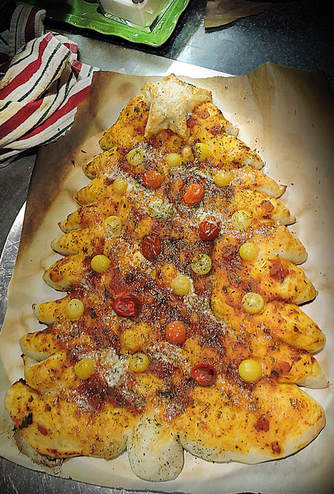 When friends come to visit during the holidays, it doesn't always mean making a formal meal. How about making a Christmas Tree Pizza? It's easy to make your own fantastic pizza crust and pizza sauce... the toppings are easy: cherry tomatoes or olives for the ornaments and strips of mozzarella, provolone cheese or even sweet peppers. Rough out the pyramidal shape with your dough, then trim the sides with a pizza cutter or chef's scissors. The star is made from trimmings cut when making the tree shape and topped with provolone. Buon Natale! --GVI 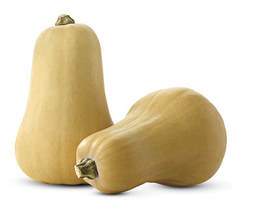 One of our favorite soups during the Christmas season or anytime during winter is Roasted Butternut Squash Soup. Although you can make this simply by cutting up the squash into cubes and adding them directly to your other ingredients, additional depth of flavor is gained by roasting halved Butternut squash in the oven before adding to the soup. This can also be made using smaller Acorn squash which has a similar taste and texture. Ingredients 2 butternut squash (or one very large one), halved with seeds scooped out and discarded. 3-4 large carrots, diced (they add texture and sweetness). 1 large sweet onion, diced (Vidalia is best) 1 tablespoon sugar 3 tbsp. extra-virgin olive oil 1 tablespoon sea salt 40 cracks of freshly ground pepper (or 1 teaspoon) 1 tablespoon dried thyme 1/4 teaspoon nutmeg 1/4 teaspoon allspice 32 ounces chicken broth Plus, additional water or cream as needed to adjust creaminess For the Garnish 2 cups fresh cranberries (You can also use canned, whole cranberries as your garnish) 1/4 cup sugar 1/4 teaspoon allspice 1 teaspoon lemon juice 1 pint of heavy cream (for whipping) 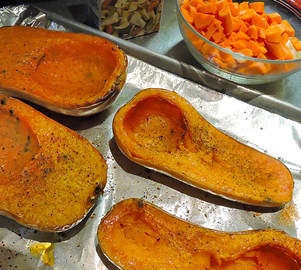 Directions
Serve with some crusty, heated bread and a glass of Prosecco. Buon appetito! --Jerry Finzi Copyright Grand Voyage Italy, 2018 - All Rights Reserved
 Making gingerbread and gingerbread houses have deep roots in history. Honey cakes can be traced to ancient Rome and culinary historians verify that ginger has been seasoning foodstuffs and drinks since antiquity. It is believed that the gingerbread as it appears today was first baked in Europe at the end of the 11th century, when returning crusaders brought back the custom of spicy bread from the Middle East. Ginger was not only tasty, but also had properties that helped preserve the bread something essential in the ancient world. According to a medieval legend, there was originally a fourth Magi who was to bring yet another gift to the infant Jesus--ginger. Sometime during his journey he fell ill and never got to Bethlehem, but a local Rabbi nursed him back to health. The Rabbi taught him that the name for Bethlehem in Hebrew actually meant House of Bread, and further told him of how he tasked his young students to make houses of bread to eat in preparation of their hopes for the coming of their Messiah. The Magus gave his chest full of ginger roots to the Rabbi and suggested adding ground-up ginger to the bread for flavor and preservation. The gingerbread house was born!  Gingerbread, as we know it today, descends from Medieval European culinary traditions. The spicy delight was also shaped into different forms by monks in Germany in the 13th century but quickly spread to other European countries. Medieval bakers used carved boards to create elaborate designs but in other places such as Calabria, Italy artisans hand shaped the spicy dough into elaborate designs, still popular today during holidays such as Easter and Christmas. Click HERE to read more about the art of Shaped Mostaccioli, the Calbrian Gingerbread. As you can see in the photos above, our gingerbread projects were modest at first, mostly a chance to begin the tradition for our son Lucas when he was a little boy. But then our passion for constructing gingerbread grew more complex and we started entering gingerbread house competions... Our 2018 Gingerbread Project: Lucas' Concept to Recreate an historic A&P Grocery Store For this year's project, I really wanted to do an Amalfi Coast hillside village complete with rugged mountain and multiple houses clinging to the cliffs, I was out-voted and we decided to build my son Lucas' concept for a 1930s vintage A&P grocery store--a timely choice since the A&P supermarket chain, the oldest in America, had recently closed all of its stores. Besides, to win, Lisa and Lucas both thought we should do a more "all-American" theme. The trouble with completing our project was that time was not on our side. For example, to create our gingerbread Colosseum it took about 6 weeks, from planning through baking all the components to finished construction. I don't know how time slipped away from us, but we only had about 10 days to plan and complete our A&P store, which would be difficult to impossible due to all the new techniques we were going to employ for the first time: melted candy windows, poured clear gelatin window "glass", creating miniature products and produce, fondant checkerboard tile floor and fondant asphalt paving, edible printed signage and timed electrical lighting! Well, somehow we did it! We delivered our project within 15 minutes of the delivery deadline! In the end, we won First Place in the Authentic Reproduction of a Significant Building category. I think we won based on to Lucas' concept and especially his skill in creating the brick textures and miniature details (fruitcake, fruit, watermelons, pumpkins, baguettes, a cheese board and much more) and his graphic design for all the signage! Oh, and of course, as usual, my wife Lisa helped with the preparation of the gingerbread dough and fondant. We Three make a great gingerbread team, don't you think? Buon Natale! --Jerry Finzi
When autumn comes to Tuscany, you will be able to enjoy Castagnaccio, a torta rustica made with chestnut flour and olive oil that has ancient origins. In the 1500s it was well known in Tuscany as cucina povera, a dish prepared by poor, peasant farmers and shepherds. Chestnuts were plentiful in the hills of the Apennines and easy to harvest, not only for its nutritious flesh but also for chestnut flour. Chestnuts (castagne) are rich in protein, calcium and vitamin A.
This torta can also be called baldino, ghirighio, toppone or pattona, depending on where you are in Italy. Local variations may include other ingredients, such as rosemary, orange peel and fennel seeds. There is even one romantic legend that says when its perfumed with rosemary, Castagnaccio is a powerful love potion--making and serving it the object of your affections will make them fall in love with you, and ask for your hand in marriage. Perhaps this is more than just a dish served during Natale, but also appropriate for Valentine's Day! In its earliest conception, it was an easy way to make a portable food (like an energy bar) that stored well for long periods, helping sustain poor contadini during long, harsh winters. According to Ortensio Landi (1553) in his “Commentario delle più notabili et mostruose cose d’Italia e di altri luoghi“ ("Commentary on the most notable and monstrous things of Italy and of other places"), he traced its origins to a man called Pilade from Lucca. By the nineteenth century however, the addition of pignoli and dried fruits morphed this spiced cake into a dessert deserving of the Christmas season and its popularity spread to Liguria, Piedmont and Emilia Romagna and even on the nearby French island of Corsica. Today you will find castagnaccio just about everywhere in Italy during Natale festivities. Keeping with Tuscan tastes, typically, no sugar is added because of the inherent sweetness in the chestnuts themselves and the addition of dried fruit and raisins. Castagnaccio is often served with ricotta, honey or sweet wines such as Vin Santo. 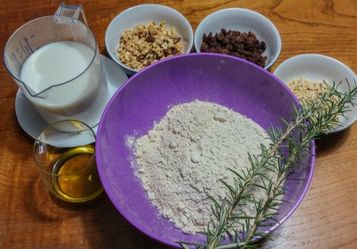
Ingredients
Optional: You can soak the raisins in rum, Amaretto or orange liquor instead of water for a more adult version.
Directions
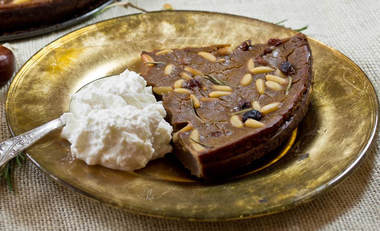
Serve with a glass of Vin Santo, and a dollop of fresh ricotta on the side, and drizzle both with a Tuscan honey of your choice.
Buon appetito! --Jerry Finzi
For further reading:
Chestnuts: The Italian Love Affair with Castagne Foto del Giorno: Chestnut Vendor Harvest Festivals in Italy: From Grapes to Wine, and More
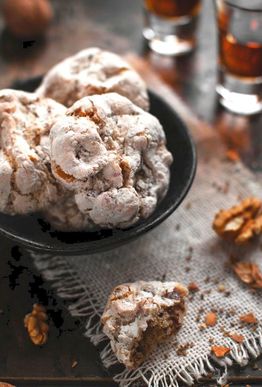 When you bite into a Tuscan cookie like Cavallucci Sienese, you'll be tasting traces of a medieval or Renaissance past... layered spices, honey, nuts, figs and canditi (mixed dried fruits), but not the typical dried fruit used in modern Italian holiday breads, but luscious candied fruit. Keep in mind, these are not pretty biscotti, they are both rustic and a bit boring looking on the outside, but soft, sweet, fragrant and flavorful inside, where it counts. A Bite of History You can find these historic cookies in shops all over Tuscany, but especially in it's hometown of Siena. When you bite into one you will be transported back to fifteenth century Siena... The name can be attributed to the fact that they used be embossed with either an image of a horse (cavallo means horse) or a horse's hoof--in fact, many today are shaped like a horses hoof. Some claim the cookies can be traced back to the reign of Jonah the Magnificent (1449–1492), when they were called biriquocoli. Others say that cavallucci were served to travelers and couriers on horseback (think "Renaissance Pony Express") as a source of nourishment for long trips (something like a Medieval power bar). Some Sienese claim that these dolci were the snacks for servants who worked in horse stables of rich Italian aristocrats in the various contradi (neighborhood districts), of obvious fame for the annual Palio horse race each year. During the Christmas holiday season, they are served with wines such as Vin Santo, Marsala, Passito di Pantelleria, Asti Spumante or Moscato--dunking is perfectly acceptable and some would say, required. 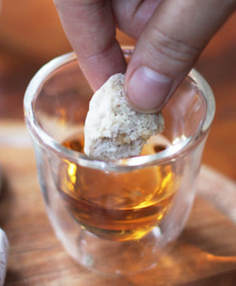 Ingredients
Directions
Serve with a sweet Italian wine, Amaretto or Sambuca. Bouna Festa! --Jerry Finzi For further reading:
|
Archives
May 2024
Categories
All
|

